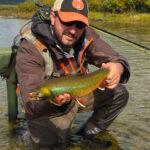The Best Anglers Never Stop Learning
The Best Anglers Never Stop Learning
The Best Anglers Never Stop Learning
The Best Anglers Never Stop Learning
I’ve had multiple shots at big, laid-up tarpon, but they just sit there, watch my fly, and slowly drift away. I’ve tried changing retrieves, switching flies, and even going to lighter tippet, but nothing seems to make them commit. What do I need to change in my approach to get eats from these massive, but frustrating, fish?

Laid-up tarpon are a different beast compared to aggressive, migrating fish. If they’re refusing, it’s not about the fly—it’s about presentation, angle, and reaction timing. Here’s how to dial in your approach:
Final Thought
When tarpon refuse, it’s rarely about the fly pattern—it’s about timing, reaction, and angle of approach. Pay attention to subtle body language cues, and you’ll start converting those looks into eats.
No recommended resources available.
"*" indicates required fields
Sign up for full access to the Learning Center
and all the FlyBrary Content.

payment methods accepted
Copyright © 2003 – 2025 MidCurrent LLC, All Rights Reserved.
Copyright © 2003 – 2025 MidCurrent LLC, All Rights Reserved.